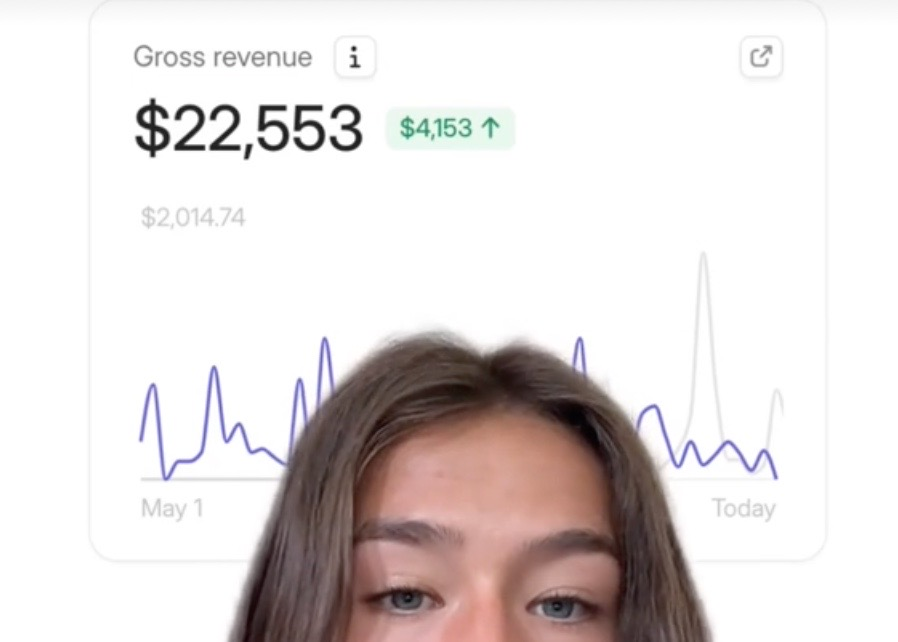Can You Really Make Passive Income with Stock Photography in 2025?
Can you really make passive income by uploading photos to stock image sites? Inspired by viral success stories, I gave it a try, and quickly ran into reality. In this article, I unpack my personal experience alongside hard research into major platforms like Shutterstock, Adobe Stock, Alamy, and Dreamstime. We’ll explore what it actually takes to earn money through stock photography, what the odds are for beginners, and how to optimize your content if you still want to give it a shot.
🎧
Prefer to listen? This topic is also explored in an episode of the John Dawson Blogcast:

“It’s not that no one wants your images, it’s just that no one ever sees them.”
Unknown
Expectations vs Reality
Like many others, I got swept up by viral claims on social media: the idea that you could make good money just by uploading a few iPhone photos to stock image platforms.
For years, I’d convinced myself I lacked the quality, the volume, or the niche expertise to succeed in stock photography. And there I was — a professional graphic designer with over 25 years of experience working with this kind of content — watching TikTok students allegedly earn a small fortune from casual snapshots.
What’s more, with AI tools at my fingertips, I could now generate unlimited amounts of high-quality imagery.
So I thought, “Let’s catch up.”
I dug up some of my best photos and lined up Shutterstock, Adobe Stock, Alamy, and Dreamstime, platforms I’d been using as a customer for years. Now, it was time to see the other side.
If you’ve never uploaded to an image bank before, let me tell you: it’s work. Most photos need retouching. Every single one requires a unique title, a well-written description, a full list of SEO-friendly keywords, and accurate categorization. Get any of it wrong, and your image gets rejected.
Over the weekend, I managed to upload 70 images to Dreamstime, and just a handful to the other platforms. Still, I felt a spark of excitement: if I earned even a single dollar from this, it would be passive income. Something I could build on over time.
A few weeks passed, and I hadn’t earned a cent. Smelling a rat, I finally did what I should’ve done from the start: I fact-checked the viral claims and began properly researching the stock photo hustle.
Turns out, from my perspective at least, I had been wasting my time.
Now, don’t get me wrong: it is possible to make money uploading photos. But it often takes years of consistent effort and thousands of images… all for what typically amounts to a modest return.
Unless, perhaps, you make this your specialty, and get very good at it.
Still interested? This article breaks down what actually works: best practices, SEO tips, content strategy, platform selection, and realistic planning.
Truth, Myths & Real Numbers

Viral Claims: The $20K/month Stock Photo Myth
Sensational claims made on TikTok, like that of a student named Jade, touting she earns $20K+ per month from casual iPhone photos, have fueled a surge of interest in passive income through stock image sites.

In her videos, Jade even shows a single scenic photo netting $26,000 over two years (4,000+ downloads), attributing it to smart tagging and keywording. This narrative has led many to believe they’re sitting on a goldmine of images on their phones.
However, industry veterans and community members are highly skeptical of these rosy claims. On a Reddit forum, experienced contributors flatly labeled Jade’s $20K/month story as fake and a scam.
Alex, from Brutally Honest Microstock, published this article debunking her claims, showing how influencers like her prey on new stock photographers.
In reality, seasoned contributors with tens of thousands of high-quality images rarely come close to that kind of monthly income. The consensus is that such viral success stories are outliers (if not outright exaggerations) and not representative of typical results.
In fact, Jade’s real monetization might be coming from selling her how-to guide to followers, rather than from stock photo royalties alone. The harsh truth is that for the vast majority of contributors, stock photography is not a quick path to riches but a slow burn that requires patience, volume, and strategy.
How Big Are the Major Stock Image Libraries?

To understand the landscape, let’s look at the major stock content platforms and their library sizes. The stock photography market is huge and competitive, dominated by a few big players hosting hundreds of millions of images (and increasingly, videos and illustrations).
Here’s a summary of the approximate content volumes on popular platforms as of 2023–2024:
- Shutterstock || ~757 million images; ~52 million videos.
- Adobe Stock || ~520 million assets (photos, illustrations, etc.), includes a large influx of AI-generated images in recent years.
- Getty Images || ~465 million images (including a 135 million analog archival collection). Plus millions of videos and editorial photos via iStock/Getty.
- Alamy || ~350 million images & vectors; ~10 million clips. (Known for its diverse editorial content and higher-res files.)
- Dreamstime || ~282 million images (plus a growing footage and audio library).
- Depositphotos || ~265 million images and media files.
- 123RF || ~210 million images, illustrations, and clips.
- EyeEm || ~160 million images (user-generated photography).
These numbers illustrate just how saturated the market is. For example, Shutterstock alone adds hundreds of thousands of new images each week to its library of three-quarters of a billion files.
Adobe Stock’s collection has exploded, thanks in part to contributors uploading AI-generated art, over 214 million AI images were noted in its library as of 2025.
Getty Images (including iStock) also boasts hundreds of millions of assets, spanning historic archival photos to contemporary digital shots. Even mid-tier players like Alamy and Dreamstime host a few hundred million images each.
What do these figures mean for a newcomer? In short: immense competition. When you upload a photo, it enters a sea of similar content (Shutterstock’s library, for instance, is growing toward 500+ million images by 2025).
Your image is a needle in a haystack, and discoverability becomes a real challenge. This is why optimizing metadata (titles/keywords) and targeting niche subjects (where there might be relatively less supply) is crucial. More on that in the best practices section.
But first, let’s look at what it actually takes for contributors to earn money in this crowded marketplace.
Effort, Portfolio Size, and Earnings

How many images do you need to make regular income? Stock veterans will say: a lot.
Successful earners usually have built up portfolios in the thousands over multiple years. They treat stock like a part-time job or serious hobby, continually shooting, editing, and uploading.
Let’s break down what contributors report in terms of portfolio size, time invested, and earnings:
Bottom line: The odds are stacked such that a beginner with a small portfolio has a low chance of substantial income. Uploading a dozen photos and waiting for passive income will almost certainly lead to disappointment. To even reach the modest milestone of, say, $100 per month, you likely need on the order of a thousand high-quality, marketable images online (and that assumes diligent keywording and some time for sales to accumulate).
Many contributors don’t hit the minimum payout thresholds for months or years, if ever. Patience is key: stock photography is a slow earner that builds gradually. It’s more like accruing royalties over time rather than striking it rich with any single upload.
What Are Your Earnings Per Download?

It’s also important to understand how stock agencies pay contributors, as this affects the effort-to-reward ratio. Most microstock platforms operate on a royalty or subscription model that yields only small fractions per download for the photographer:
The key point is that royalties per download are small on microstock. Earning $100 in a month might mean your content was downloaded a few hundred times across various sites. That in turn requires a sufficiently large and attractive portfolio.
The days of a single photo netting you big bucks regularly are mostly gone (except in the rights-managed or exclusive macro stock world, which is a tough club to break into). The microstock model is about selling lots of images at low prices. As a contributor, you’re playing a high-volume game of pennies that hopefully add up.
Now that we’ve covered the gritty stats and payout structure, if you’re still interested in pursuing stock photography, let’s talk about best practices to maximize your chances of success in today’s market.
Best Practices for Stock Photo Contributors in 2025

Even though it’s challenging, it’s not impossible to earn some side income from stock photography if you go in with a smart strategy. Here are some best practices and tips, covering SEO, content strategy, platform selection, and realistic planning, to improve your effort-to-reward ratio:
1. Master SEO for Images: Titles, Keywords & Descriptions
With millions of files competing for attention, how you keyword and title your images heavily influences whether buyers ever find them. Here’s how to optimize your submissions:
Good keywording can significantly boost an image’s downloads over time. It’s often said that 20% of your images will get 80% of the sales: those tend to be the ones that hit the sweet spot of being in-demand content with great keywords. Spend the extra few minutes per image to really maximize the metadata; it can pay off with more visibility.
2. Shoot What Sells: Content Trends and Demand in 2025
In such a saturated market, content selection is crucial. You want to produce images that buyers need, but also find niches that aren’t completely over-served.
Here are tips on what to shoot (and what not to shoot):
In summary, to choose content wisely: balance your passion with market needs. Shoot subjects you know well or have access to, but frame them in ways that are useful to buyers (storytelling elements, clear copy space for text, etc.). And always keep quality high, sharp focus, good lighting, and composition are still must-haves to pass agency inspections and attract buyers.
3. Choose Your Platforms Strategically
Not all stock agencies are equal, and you don’t have to contribute to every single one. It’s often better to focus on a few of the top platforms that generate the most sales, rather than spreading yourself too thin. Each site has its pros and cons:
In summary, to maximize earnings in 2025, focus on Shutterstock, Adobe Stock, and Getty/iStock as your primary outlets: these collectively command the bulk of the market and will likely make up the majority of your sales. Use others as supplemental. And always track your time vs return on each platform; you might find, for example, that spending time to upload to a site that yields only $5 a month isn’t worth it, and you could invest that time in creating new content instead.
4. Be Realistic: Time Investment, Patience & Strategy
Lastly, set realistic expectations and approach stock photography strategically rather than emotionally. Given everything we’ve covered, here are some final pieces of advice for aspiring stock photographers in 2025:
My Take

The popular notion of uploading a bunch of photos and kicking back to collect thousands in passive income is, for most, a fantasy.
Stock photography in 2025 may still offer some opportunities, but only for the most committed and astute professionals: those capable of consistently producing high-quality content and identifying niches not already flooded with competition.
The data and contributor feedback show a clear picture: it takes a substantial portfolio (often several thousand images) and consistent effort over years to generate meaningful, regular earnings. Even then, the income is usually modest: a supplemental side hustle rather than a windfall.
Keep in mind, if you’re starting today, factors like the rise of AI-generated images may reshape the stock image market entirely, potentially accelerating its decline in the near future.
That said, for creatives who enjoy photography and are willing to put in the work, stock agencies still offer a global marketplace for your visuals. You can make money while you sleep, just expect cents per night, not dollars.
Over time, that passive income can grow, just don’t quit your day job based on a viral TikTok.
Good luck, and happy shooting!
Stock Photography FAQ
Sources:
- Brutally Honest Microstock, “Debunking Viral TikTok Claims: $20K/Month from Stock Photos?” – for Jade’s alleged earnings and stock photo influencer analysis.
- Reddit /r/stockphotography – for contributor experiences and earnings breakdowns.
- Shutterstock Contributor FAQs and Royalty Structure – for payout percentages and system updates.
- Adobe Stock Contributor Portal – for royalty info and Creative Cloud bonus programs.
- iStock/Getty Contributor Guidelines – for royalty rates and exclusivity policies.
- Alamy Contributor Hub – for royalty information and portfolio performance.
- Wirestock.io – for aggregation and multi-agency submission options.
- Adobe, “2024 Creative Trends” – for content suggestions and future demand.
- Microstock Diaries and Symbiostock Blog – for long-term contributor earnings patterns.
- PetaPixel, “Is AI the End of Stock Photography?” – for industry commentary on the impact of AI-generated images.
- EyeEm Contributor News – for platform changes after 2023 acquisition.
Great to have you here! Feel free to leave your thoughts in the comments.
Hi, I’m John Dawson, the creator of DawsonDecoded. Whether you’re here to start a blog, explore new ways to earn online, or rethink your career path, I hope you’ll find something useful, and maybe even inspiring.
Want honest insights on blogging, online income, and simple tools to build something of your own?
Subscribe and get new posts delivered straight to your inbox. No spam, just the good stuff.
Content Creation vs Lottery: Which Is the Smarter Bet?
Why blog instead of buying lottery tickets? Because the odds and the long-term payoff make content creation a far smarter bet for financial success.
Pinterest for Bloggers: Why It’s the Best Platform to Grow Your Blog in 2025
Pinterest is still one of the best ways to grow blog traffic in 2025. Here’s how to use it to get steady visitors for months, even years after posting.
Are Influencer Courses Still Worth It in 2025, or Just Built on Yesterday’s Internet?
Online courses promise to teach you how to make money as a creator. But in 2025, are they worth it or just selling outdated methods?
What are the best social media platforms to drive traffic to your blog in 2025?
Which social platform is best for growing a blog? Here’s a breakdown of the main networks: their audiences, strengths, and weaknesses.
The Truth About Passive Income: What You Need to Know to Succeed
Passive income sounds great, but how real is the hype in 2025? Here’s what the stats say, and how blogging can still be part of the game.







Leave a Reply